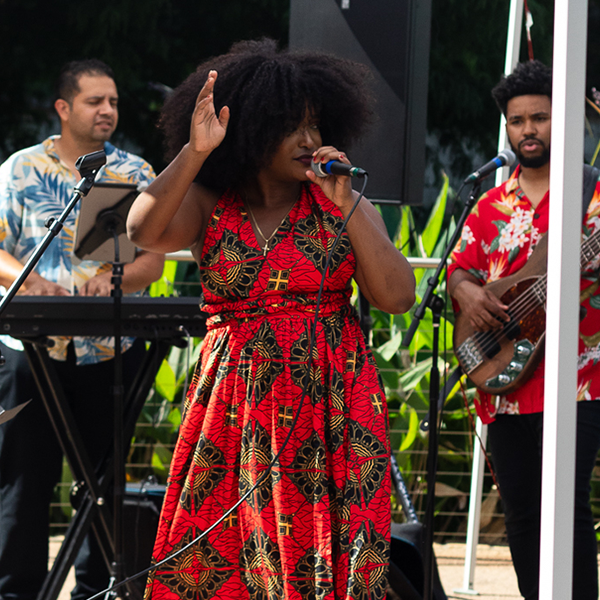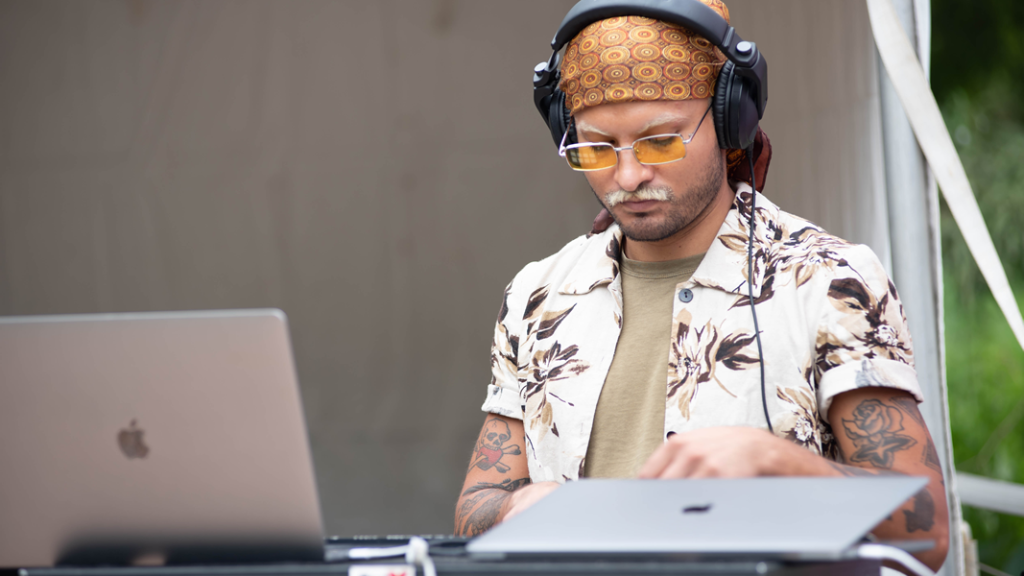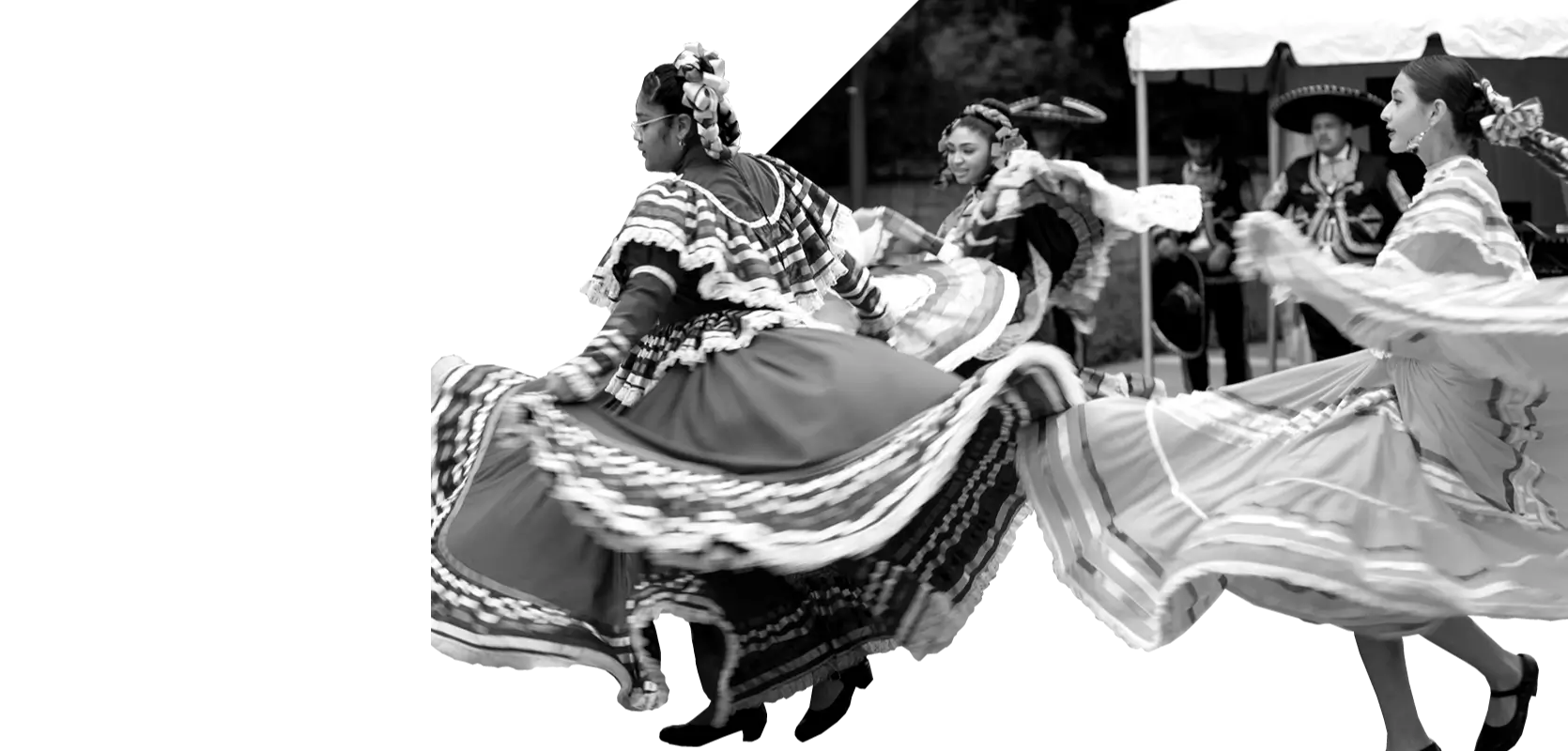Groups like Contrapunto, and the Berroa Arts Circle have been instrumental in recognizing the transnational nature of art and have advocated for the inclusion of Latino artists in established galleries and spaces like Gallery 72 (a municipally owned art gallery located in the heart of downtown Atlanta) and The Coca-Cola Company.
Because of our diversity, art serves to both preserve culture and forge a path to developing individual and collective identity.
In 2011, “Hispanomaericanos, Traveling Souls,” a traveling exhibition of Latino artists, was well received, culminating in the publication of a book of the same with the support of various local organizations.
More recently, initiatives such as “Nuestra Creación”—an artist-led project that annually showcases a collective exhibit of primarily young Latinx artists from Georgia—and the formalization of Arte-GA as a nonprofit organization dedicated to supporting artists with business, financial, and technical assistance, have helped institutionalize the consistent presence of Latino artists across the state.
Meet Juan Ramirez
Violinist, composer, conductor, and nonprofit founder. Juan Ramirez stands as the undisputed advocacy and community education pioneer, remaining a central figure in the scene for decades. He has been a member of the Atlanta Symphony Orchestra since 1974 and is the founder and artistic director of the Atlanta Virtuosi Foundation, the Buckhead Youth Orchestra, and Casa de la Cultura-Atlanta.
Additionally, he serves as the music director and conductor emeritus of the Atlanta Community Symphony Orchestra.
Many of his commissioned compositions have been world premiered in Atlanta, New York, Budapest, Collonges sous Salève, Geneva and Monaco. His recent Elegy for violin, cello, piano and soprano, composed for the pancreatic cancer research fundraiser ART-CAN, was choreographed and performed with members of the Atlanta Ballet.
Today, efforts to educate children in the classical musical tradition continue in the hands of people like Juana Alzaga and the Buford Highway Orchestra Project.
Identity is central to the work of folkloric groups and artisans like Danzas Genéricas de Colombia. Their mission is to preserve and educate the community on ancestral traditions that they find purpose and joy. These groups play a vital role in educating others about cultural heritage, but their efforts come with significant challenges, as oftentimes interested parties refuse to acknowledge the cost of creating, maintaining, and storing traditional costumes and instruments.

Even in the midst of a deep anti-immigrant political environment, Latino artists have been at the forefront of creating spaces and narratives focused on our joy, pride, and contributions.
Today, Georgia has a vast array of artisans and folkloric groups from all nations in Latin America and the Caribbean, from Mexico to Argentina, from Puerto Rico and Brazil to Peru. However, most of these collectives remain volunteer groups without access to consistent space for practice or funding.
Exploring and Expressing Our Identity

Festivals have also become important in creating cultural spaces around celebrating our identity. Festival Peachtree Latino in the City of Atlanta, Festival del Sabor in Dalton, Tri-city Latino Festival in Columbus, and the Festival Hispano in Augusta were some of the first public events organized to bring awareness and celebrate our cultural heritage.
More recently, Hispanic Heritage Festivals in Savannah, Latinx Fest in Athens, the Conyers Latin Festival, Estamos Aqui Fiesta in Atlanta, Placita Latina in Decatur, The Georgia Latino Film Festival, Latino Fest in Gainesville, and many others have emerged to ensure our culture and traditions are uplifted across the state.
Groups like OYEFest and La Choloteca are now recognized as cultural forces driving youth and young adults to be unapologetic about our diverse expressions and creative power. Musicians like KapG, Nino Augustine, Victor Mariachi, Kat on the Muv, Felicita and many others, continue to lead authentic conversations about the intersectionality, diversity, and richness of our experiences in the state.

There is quality to our craft beyond who we are.
Focus group participant
While being Latino can create some opportunities in the arts, it can also feel like a trap. Many Latino artists worry that their identity is the only reason they get noticed, making them question whether their work is truly valued.
The truth is that tokenism is a big issue. For example, although the racial diversity in the Latino community allows actors to explore different heritages and identities, they also struggle with the pressure to fit the stereotype of what a Latino should “look like” or “sound like” and are eager to break free from these narratives.
Overcoming Obstacles
Artists often struggle to increase awareness of their work, find welcoming spaces to showcase their art, receive appropriate compensation, or find mentors and support to take their work to the next level.
A common concern among artists, regardless of their background, is the lack of financial stability and the difficulty of balancing their professional lives with their creative passions. Many struggle with multiple jobs—usually two to five—to make ends meet, often teaching their craft or finding other creative ways to support themselves.
To turn their art into a business, artists need to learn important skills like understanding contracts, filling out W-9 forms, creating invoices, and negotiating fees. While they typically pick these skills up over time, having direct support would really help them beyond just honing their craft.
In a state where many policies overlook Latino small businesses, for artists, just being visible feels like an act of defiance.
During focus groups, artists expressed frustration at being asked to perform for free, especially during events like Hispanic Heritage Month organized by corporations or nonprofits. There’s a shared feeling that they often have to “fight” for their space, funding, and recognition, especially when they don’t fit a specific racial or cultural mold.
In recent years, more galleries and art spaces have been intentional about including collectives of artists that better reflect the diversity of the state’s population.

I don’t want to fight. I just want to fly.
Focus group participant
A Community of Support
Dedicated spaces for artists to connect, create, and showcase their work are essential. Churches, local organizations, and community-based groups have also been instrumental in helping new Latino residents establish their footing in Georgia. These venues allow for workshops, exhibitions, and the sharing of creative processes, contributing to a vibrant artistic community.
In the focus groups, artists also expressed how important it is to have networking spaces that double as community hubs. These places allow them to connect, collaborate, and express themselves freely.
Cultural leadership plays a pivotal role, with organizations such as ARTE-GA and Contrapunto, along with former non-Latino galleries, serving as crucial hubs for networking and support. These spaces have empowered many artists to navigate the creative sector effectively.
Networking opportunities are vital for artists, as many find acting gigs and other creative chances through events where they meet industry professionals and fellow artists.
Cultural leadership plays a pivotal role, with organizations such as ARTE-GA and Contrapunto, along with former non-Latino galleries, serving as crucial hubs for networking and support. These spaces have empowered many artists to navigate the creative sector effectively.
Thanks to these platforms, art, and culture weave the threads of our community, fostering connections that enrich our social, intellectual, and emotional development. They help stitch together a stronger, more vibrant cultural identity.






